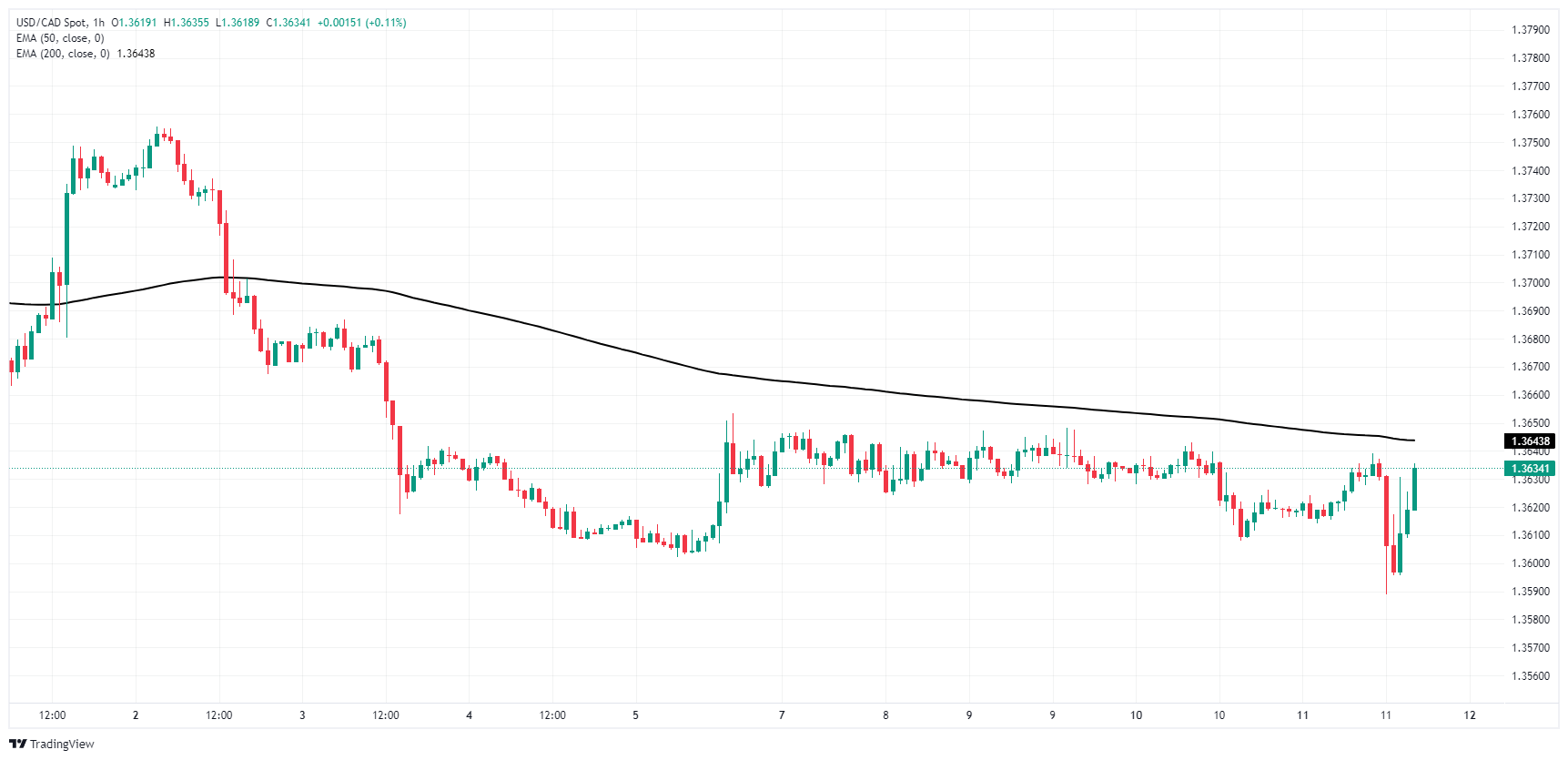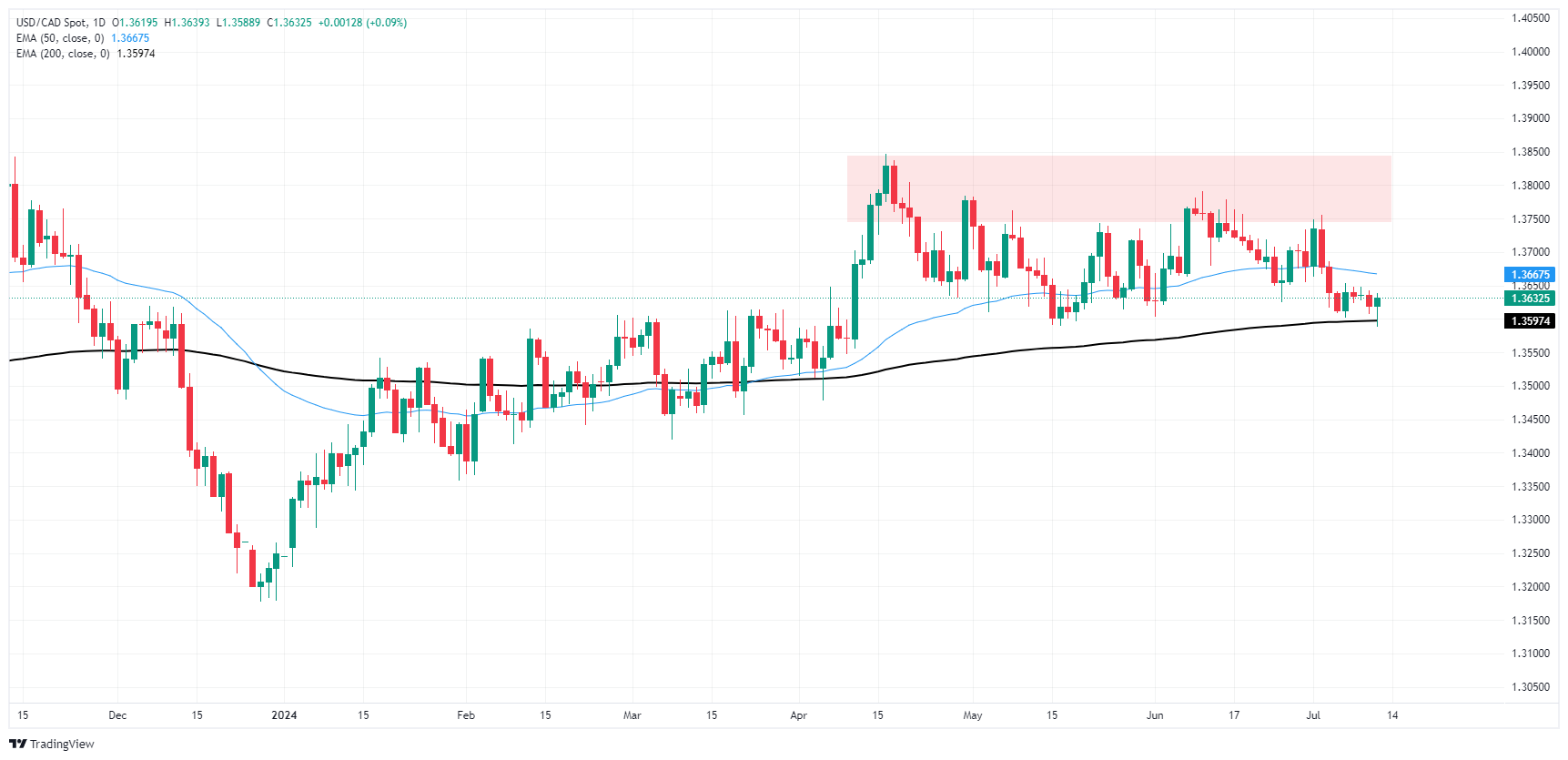- The Canadian dollar was down across the board on Thursday.
- Canada remains absent from the economic calendar this week.
- US CPI inflation contracted in June, prompting fresh rate cut bets.
The Canadian Dollar (CAD) fell against all of its major currencies on Thursday as a void economic release calendar left the CAD at the mercy of broader market forces. US Consumer Price Index (CPI) inflation moderated faster than expected in June, rekindling investor expectations for an accelerated pace of rate cuts in 2024.
Canada will continue to provide no significant economic data for CAD traders until the next release of Canada’s own CPI, scheduled for next Tuesday and published alongside US retail sales figures. Meanwhile, US Producer Price Index (PPI) wholesale inflation is due out on Friday and is still expected to rise in annualized terms.
Daily Market Drivers Roundup: Canadian Dollar Weakens, Lagging on Broader Market Risk Bid
- US CPI inflation fell in June, recording a contraction of -0.1% versus the expected increase of 0.1% from 0.0% previously.
- US core CPI inflation also fell to 3.3% year-on-year compared with expectations of 3.4%.
- Cooling inflation data has rekindled broader market hopes for an accelerated pace of rate cuts by the Fed.
- Rate markets have priced in a 95% chance of at least a quarter-point rate cut when the Federal Open Market Committee (FOMC) meets on Sept. 18.
Canadian Dollar PRICE Today
The table below shows the exchange rate of the Canadian Dollar (CAD) against major currencies today. The Canadian Dollar was the strongest currency against the Canadian Dollar.
| USD | EUR | GBP | JPY | CAD | AUD | NZD | CHF | |
|---|---|---|---|---|---|---|---|---|
| USD | -0.33% | -0.47% | -1.90% | 0.09% | -0.28% | -0.38% | -0.62% | |
| EUR | 0.33% | -0.13% | -1.59% | 0.43% | 0.05% | -0.04% | -0.28% | |
| GBP | 0.47% | 0.13% | -1.45% | 0.56% | 0.19% | 0.09% | -0.14% | |
| JPY | 1.90% | 1.59% | 1.45% | 2.03% | 1.65% | 1.52% | 1.32% | |
| CAD | -0.09% | -0.43% | -0.56% | -2.03% | -0.39% | -0.48% | -0.71% | |
| AUD | 0.28% | -0.05% | -0.19% | -1.65% | 0.39% | -0.10% | -0.33% | |
| NZD | 0.38% | 0.04% | -0.09% | -1.52% | 0.48% | 0.10% | -0.23% | |
| CHF | 0.62% | 0.28% | 0.14% | -1.32% | 0.71% | 0.33% | 0.23% |
The heatmap shows percentage changes of major currencies. The base currency is selected from the left column, while the quote currency is selected from the top row. For example, if you choose the Canadian Dollar from the left column and move along the horizontal line to the US Dollar, the percentage change shown in the chart will represent the CAD (base)/USD (quote).
Technical Analysis: CAD weakens despite weaker dollar, data-free slide continues
The Canadian Dollar (CAD) was down across the board on Thursday, falling 2% against the Japanese Yen (JPY) and more than half a percentage point against the British Pound (GBP) and Swiss Franc (CHF). Despite the overall weakness in the US Dollar (USD), the Canadian Dollar still lost a tenth of a percentage point against the USD.
The USD/CAD started the US trading session with a rapid decline to its lowest levels since mid-April, but firm selling pressure from the CAD gave the Dollar a boost. Short momentum could not sustain the pressure, and the USD/CAD has bounced from the 200-day exponential moving average (EMA) near the 1.3600 level. Despite the intraday turnaround, the pair remains trapped in a technical congestion that has plagued the daily candles since April.
USD/CAD Hourly Chart
USD/CAD Daily Chart
Canadian Dollar FAQs
The key factors determining the Canadian dollar (CAD) are the level of interest rates set by the Bank of Canada (BoC), the price of oil, Canada’s main export, the health of its economy, inflation and the trade balance, which is the difference between the value of Canadian exports and its imports. Other factors include market sentiment, i.e. whether investors are betting on riskier assets (risk-on) or looking for safe assets (risk-off), with risk-on being positive for the CAD. As its largest trading partner, the health of the US economy is also a key factor influencing the Canadian dollar.
The Bank of Canada (BoC) exerts significant influence over the Canadian dollar by setting the level of interest rates that banks can lend to each other. This influences the level of interest rates for everyone. The BoC’s main objective is to keep inflation between 1% and 3% by adjusting interest rates up or down. Relatively high interest rates are generally positive for the CAD. The Bank of Canada can also use quantitative easing and tightening to influence credit conditions, with the former being negative for the CAD and the latter being positive for the CAD.
The price of oil is a key factor influencing the value of the Canadian dollar. Oil is Canada’s largest export, so the price of oil tends to have an immediate impact on the value of the CAD. Generally, if the price of oil rises, the CAD rises as well, as aggregate demand for the currency increases. The opposite occurs if the price of oil falls. Higher oil prices also tend to lead to a higher probability of a positive trade balance, which also supports the CAD.
Although inflation has traditionally always been considered a negative factor for a currency, as it reduces the value of money, the opposite has actually occurred in modern times, with the relaxation of cross-border capital controls. Higher inflation typically leads central banks to raise interest rates, which attracts more capital inflows from global investors looking for a lucrative place to store their money. This increases demand for the local currency, which in Canada’s case is the Canadian dollar.
The released macroeconomic data measures the health of the economy and can have an impact on the Canadian Dollar. Indicators such as GDP, manufacturing and services PMIs, employment and consumer confidence surveys can influence the direction of the CAD. A strong economy is good for the Canadian Dollar. Not only does it attract more foreign investment, but it can encourage the Bank of Canada to raise interest rates, which translates into a stronger currency. However, if the economic data is weak, the CAD is likely to fall.
Source: Fx Street
I am Joshua Winder, a senior-level journalist and editor at World Stock Market. I specialize in covering news related to the stock market and economic trends. With more than 8 years of experience in this field, I have become an expert in financial reporting.







